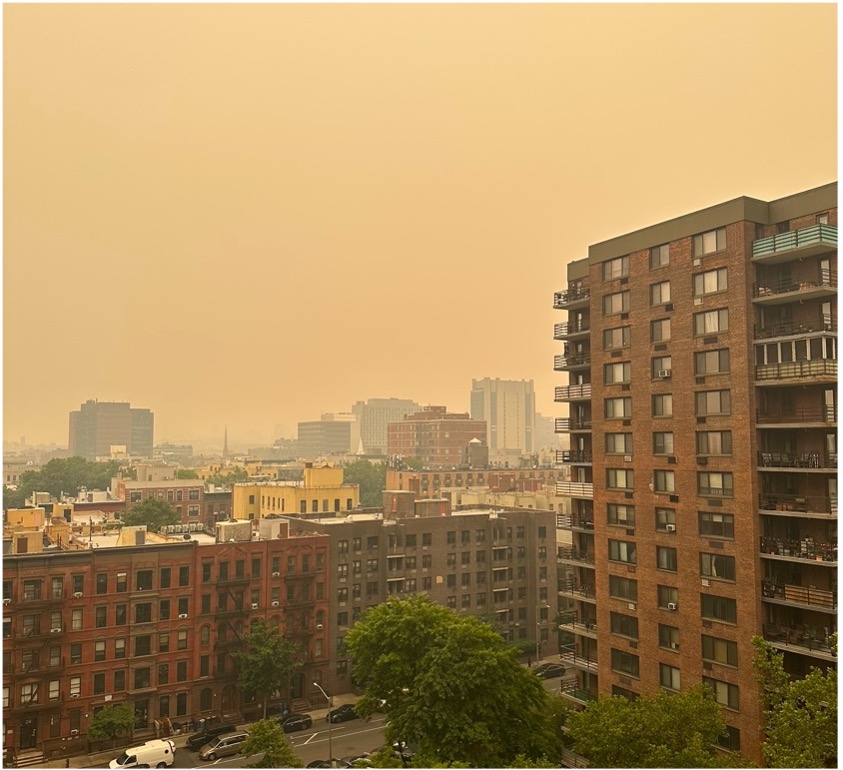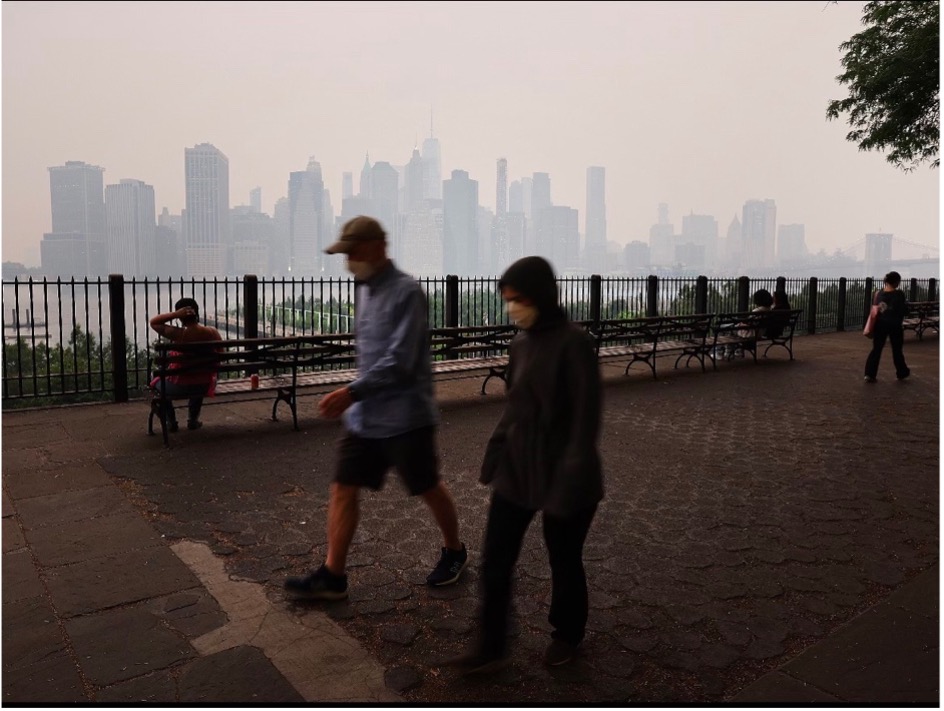Written by: Rashawn Khamari Merchant
On Wednesday, June 7th, Canadian wildfire smoke led the Eastern United States to experience some of the worst air quality in the world. Millions of Americans received warning alerts as air quality reached hazardous levels unseen in decades. In New York City, the levels of small particles in the air were their highest since 1999. The previous Tuesday resulted in the second highest.

Kareem Baker/Earth Shiners
These air particles are dangerous because they are small enough to enter deep into the lungs and eventually into the bloodstream. Carbon monoxide, carbon dioxide, and water vapor are a few molecules that can present a danger when inhaled. Chronic exposure can affect the lungs, kidneys, liver, brain, and heart. Those who are elderly, pregnant, and asthmatic are sensitive to wildfires due to underlying conditions.
During the week, it was common to see people wearing masks again. The Environmental Protection Agency suggested wearing N95 masks to help because they block out small particles. New York Governor Kathy Hochul announced that 1 million masks would be available to those in need for the polluted days. It was important that the governor also made it a point to recognize that these fires are an issue of climate change.
She said, “While continuing our fight against climate change, we need to recognize this is a new reality we must be prepared for.”
It is a new reality indeed. The “Pyrocene,” as Stephen Pyne, emeritus professor at Arizona State University, has coined it, refers to a new era of human-caused fire conditions worldwide. For many on the East Coast, this was a wake-up call specifically to the damage wildfires can cause and have on people living in densely populated areas. While wildfires have continuously occurred throughout Earth’s history, rising temperatures, changing rainfall patterns, and drought from increased greenhouse gas emissions have led to this decadal increase in burnings. It is the “fire equivalent of the ice age,” Pyne said.
In 2020, 10.2 million acres of the west coast burned. Rising temperatures do not initiate fires; dry grounds create the conditions for their intensity. Less water leads to dead trees and dry bushes.

A study posted in the American Geophysical Union suggested fires in British Columbia, Canada burned 7 to 11 times more with human interference as opposed to without. To combat these fires, we must work hard to mitigate the causes through lowered gas emissions and improved forest management.
In the meantime, the CDC recommends staying inside and wearing a mask during hazardous air quality and utilizing air purifiers when indoors. It is important not to add to particulate matter by refraining from cooking with gas, smoking, or even vacuuming.
Thanks for reading!
Copyright Earth Shiners Creative LLC 2023
Earthshiners@earthshinersmagazine.com
Leave a Reply